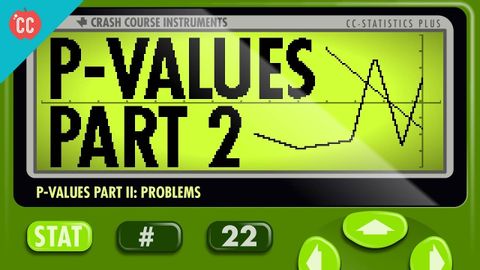P值問題。統計速成班#22 (P-Value Problems: Crash Course Statistics #22)
 沒有此條件下的單字
沒有此條件下的單字US /ˈkɑɡnɪtɪv/
・
UK /ˈkɒgnətɪv/
- adj.認知的;認知能力的;認知發展的;認知療法的
- v.t.裝出;假裝;以為;(想當然地)認為;承擔;就任
US /ɔlˈtɚnətɪv, æl-/
・
UK /ɔ:lˈtɜ:nətɪv/
US /ˈɛvɪdəns/
・
UK /'evɪdəns/
- n. (u.)證據;證據 (法律)
- v.t.表明;證明

